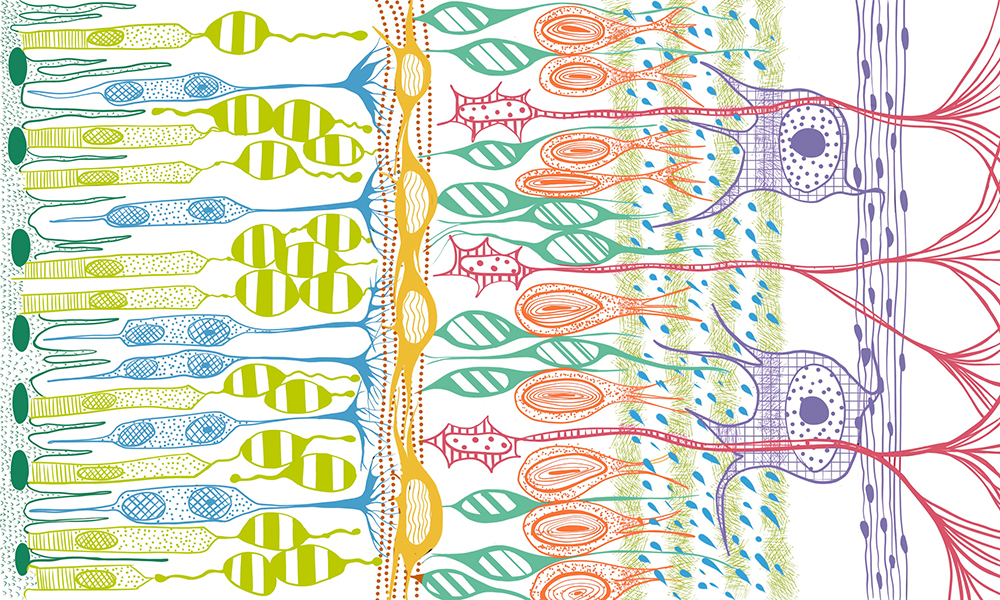EMBL scientists have found evidence of an unexpected role for retinal cells in pre-processing visual information; their results provide potential opportunity for future prosthetic visual aids.

Scientists have long known that vision is made possible because our brains decode electrical signals that are sent by the retina. However, recent evidence indicates that retinas may do even more. They too may be deciphering what we actually see.
Located at the back of the eye, the retina is a neuronal tissue that receives visual input to the eye and converts it to electrical signals that travel to the brain. Apart from mapping the outside world, the retina extracts visual features, such as colour, contrast, and motion.
The retinal layers contain diverse and specialised sets of cellular components. When light hits the retina, it stimulates photoreceptors, creating an electric signal that is conveyed through other neurons - horizontal, bipolar, and amacrine cells - to the retinal ganglion cells (RGCs).
The RGCs are located on the inner surface of the retina, where they project visual information to the brain via their axons, which make up the optic nerve. These neurons are at the core of the scientists' recent findings.
RGCs have conventionally been considered as a relay, simply integrating incoming visual signals from the eye and conveying them to the brain. However, recent anatomical studies suggest that RGCs may form a more complex network with other retinal neurons through high-speed communication channels.
Scientists in the Asari Group at EMBL Rome found evidence that RGCs can send feedback signals to other retinal cells, and contribute to local computation of visual stimuli by modulating the output signals from the retina. Their results on such a novel gain control mechanism in the retina have been published in the journal PLOS ONE.
Building on the team's expertise in computational methods, the scientists developed a biologically inspired mathematical model of the retinal network and derived predictions on how RGCs of the same type modulate each other's activity. They then conducted experiments to confirm those predictions in mouse and salamander retinas.
"Our brain is a predictive machine," said Hiroki Asari. "It generates a mental model of the outside world based on past evidence and predicts future sensory inputs. When the prediction differs from actual sensory inputs, the brain uses the discrepancies (or 'surprises') to update the mental model and adjust our behaviour accordingly. While the brain cortex is commonly assumed to perform such predictive processing, recent evidence suggests that the retina might compute those visual surprises by some unknown mechanisms. We think that the feedback signalling we found at the level of retinal output may play a key role there."
Understanding exactly how this feedback pathway helps retinal function creates a way for researchers to potentially develop future prosthetic devices that could faithfully mimic the retina's visual processing.
The study also shows the benefit of combining experimental and theoretical approaches in neurobiological studies. "Conventionally, scientists run experiments first and then build a model to explain the data," Asari said. "In contrast, we started with a computational model of the retina and derived predictions on the retinal physiology. Then we tested the prediction by performing electrophysiological experiments. This type of theory-driven approach can be applied to other brain areas to better understand their function and is therefore a promising new direction of research."






